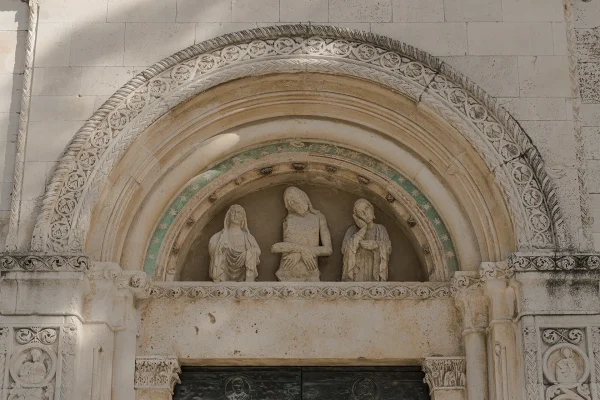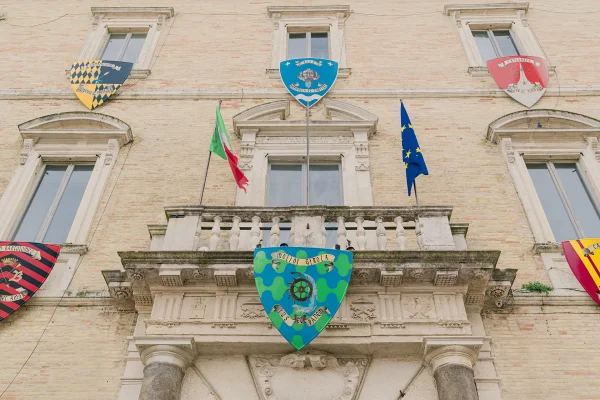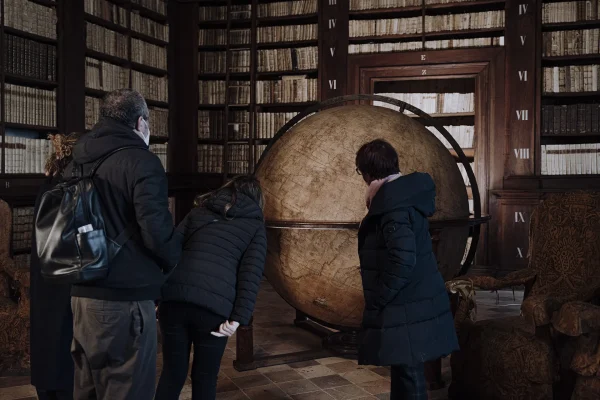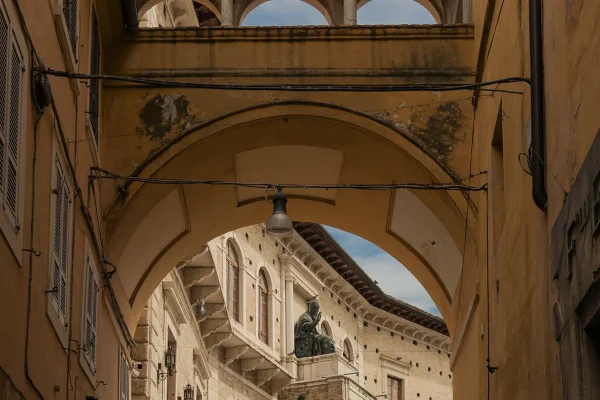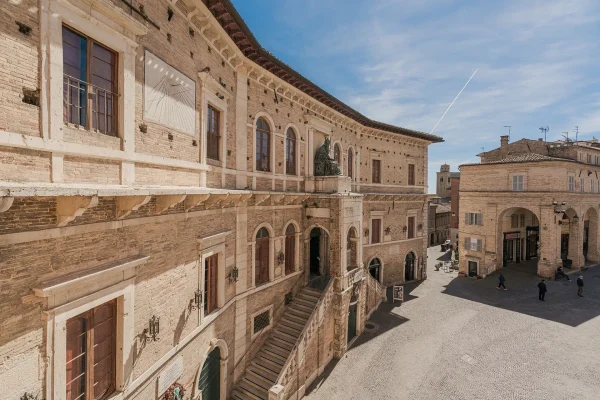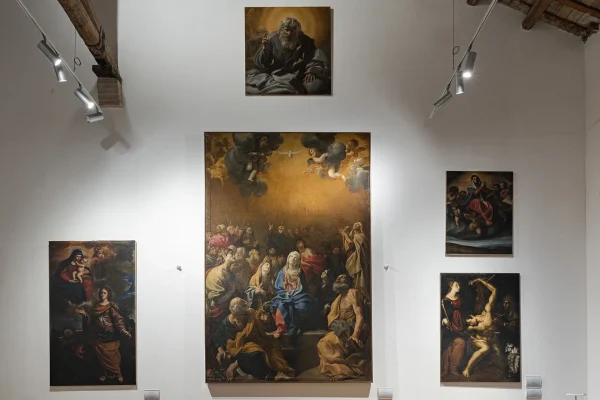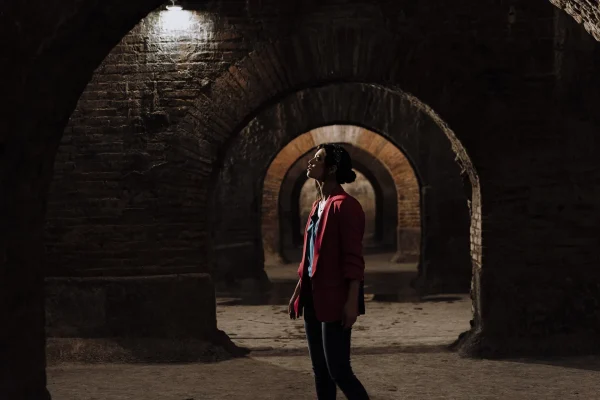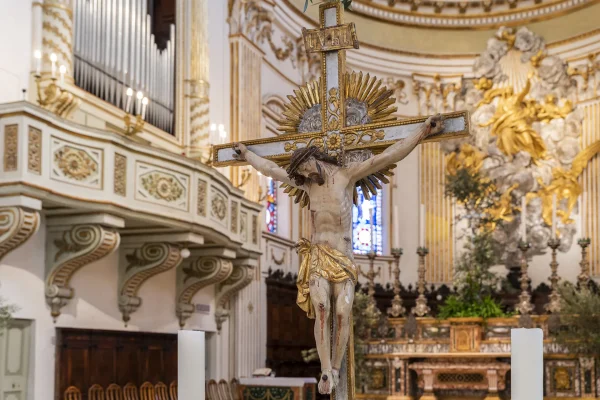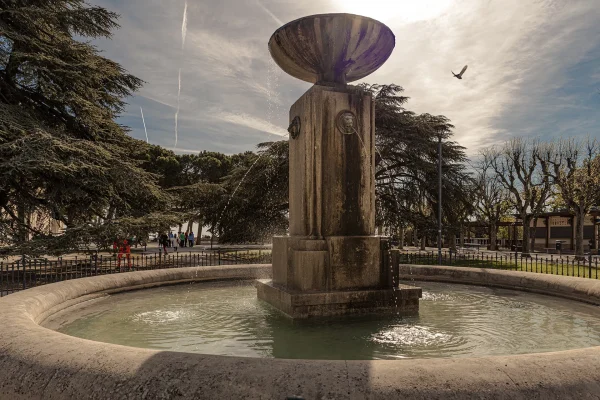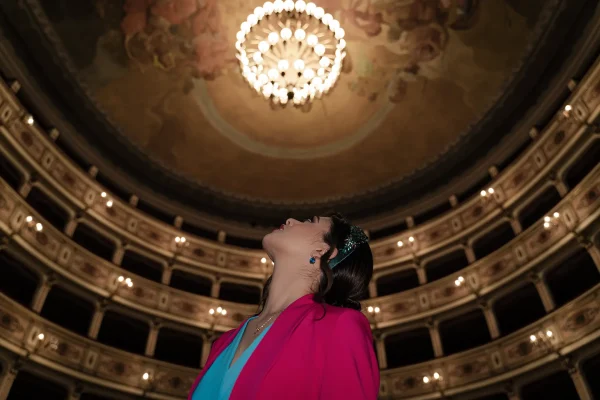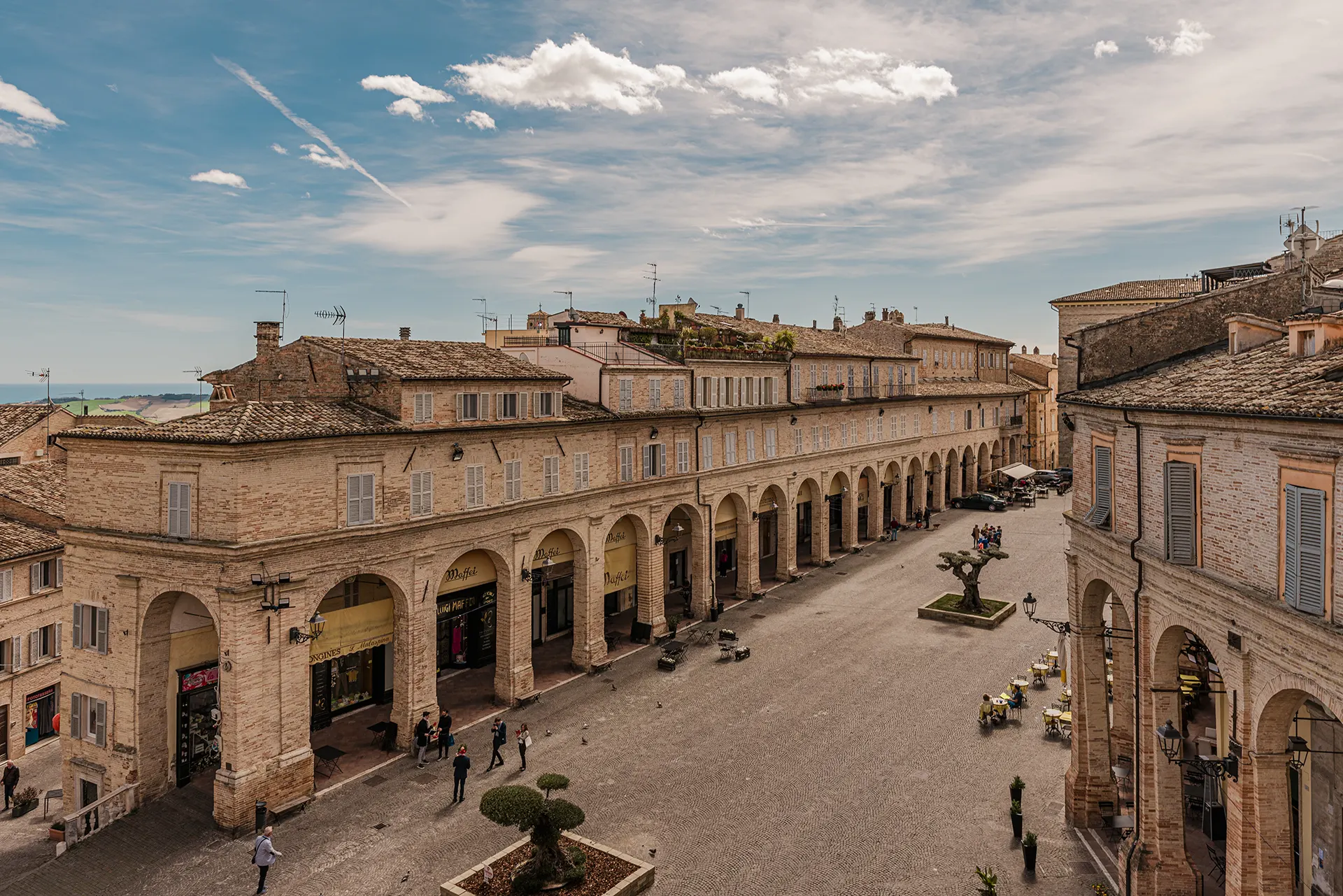
Every brick tells a story
From Piazza del Popolo to the Cathedral
Fermo, with its multi-millennial past, is one of the Marche’s richest centres of history and art. Narrow alleyways, elegant aristocratic palaces and evocative views characterise the historic centre that, as if time had not passed, still retains its Renaissance urban layout. Clean and linear in form, Piazza del Popolo is the beating heart of the city. It is bound upstream and downstream by two imposing 16th-century brick porticoes and it is lined by the oldest public buildings. Each of them has its own architectural characteristics, but as a whole they blend harmoniously, respecting the rigour and uniformity of the site.
Palazzo degli Studi, with its elegant frescoed loggia connecting it to Palazzo dei Priori, features a tabernacle with a statue of the patron saint, Santa Maria Assunta, in the centre of the façade. The four busts surmounting the windows, on the other hand, depict the Popes who contributed to re-establishing the University, which stood on this site until the 19th century. Today, the building houses the civic library, which houses more than 300,000 books, making it one of the top ten in Italy in terms of importance. The most valuable in the collection include the Book of Hours that belonged to Queen Christina of Sweden and a 1493 “de su gran descubrimiento” epistle, handwritten by Christopher Columbus.
With an imposing Renaissance façade, Palazzo dei Priori, the oldest public building in the city, houses the civic museums: the Art Gallery, the Pre-Roman archaeological section, the splendid Globe Room and the ancient core of the civic library.
The Art Gallery houses works ranging from the Middle Ages to the 19th century. The most important include the priceless panels with the Stories of St Lucy by Jacobello del Fiore, a Gothic masterpiece from the early 15th century, and the Pentecost by Giovanni Lanfranco, a grandiose altarpiece by the Baroque master. There is also a painting by the great Flemish painter Pieter Paul Rubens, The Adoration of the Shepherds.
The last palace is the Governor’s Palace, the construction of which began in the 16th century. Between the 16th and 17th centuries, it was the residence of the papal representatives, figures chosen from among the Holy Father’s closest relatives to look after his interests in the territory. Now the seat of the Town Hall, it owes its name to the papal representatives, chosen from among the closest relatives of the Holy Father who resided in this building to look after papal interests in the territory.
Next are the Great Roman Cisterns, a stupendous architectural complex consisting of thirty connected rooms, built two thousand years ago to collect and distribute water. Hidden under part of the historic centre, they are a unique monument, both in terms of their size and excellent state of preservation.
Along Via Mazzini, the street leading to the highest point of the old town centre, is Aquila Theatre. Boasting over a thousand seats, divided between a large stall and five tiers of boxes, it is the largest historical theatre building in the Marche region. The outside gives no clue to the magnificence of the interior: the sobriety of the façade would never suggest the richness of the furnishings. Red, elegant white and gold stuccoed parapets and frescoed ceiling make this a majestic and unique space.
Continuing along Via Mazzini leads to the city’s belvedere, where the solemn 1227 Cathedral of Santa Maria Assunta stands out, characterised by a Romanesque-Gothic façade in Istrian stone. Visibly asymmetrical, due to the off-centre tympanum, the church features a stunning round-arched portal surmounted by a spire. The majestic 14th-century rose window is decorated with delicate openwork leaves and twelve twisted columns. The interior, renovated at the end of the 18th century in neoclassical style, preserves the remains of an ancient church from the 5th century AD in the basement, a sign of how far back Christian worship goes in the area.
Lastly, the spectacular views from Girfalco Park, with its centuries-old trees, sweep from the sea to the hills and the Sybillines and returns them to the privileged position that has made Fermo a flourishing centre of studies, cultural and commercial exchanges, and a land offering a warm welcome and hospitality.


